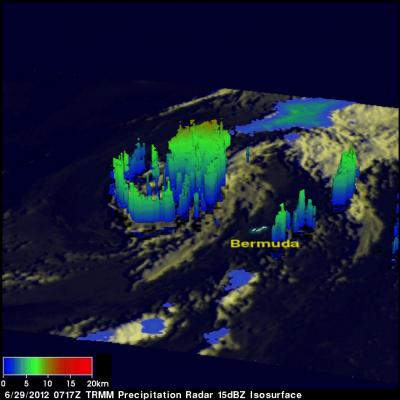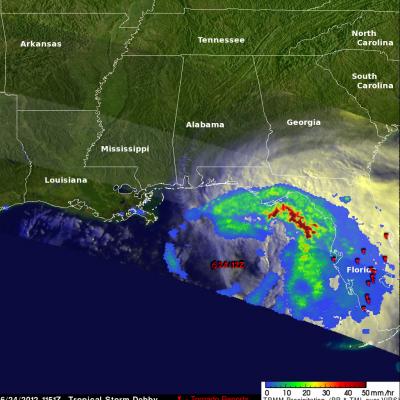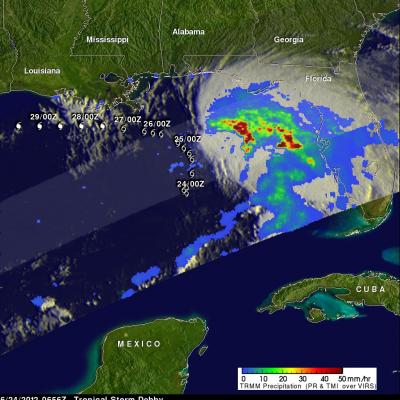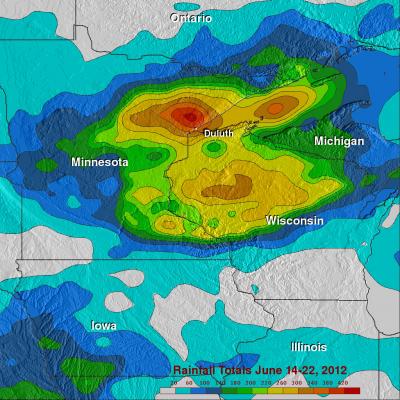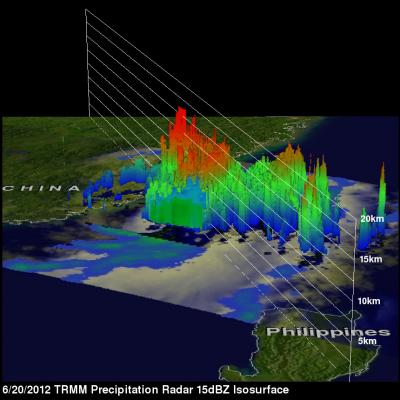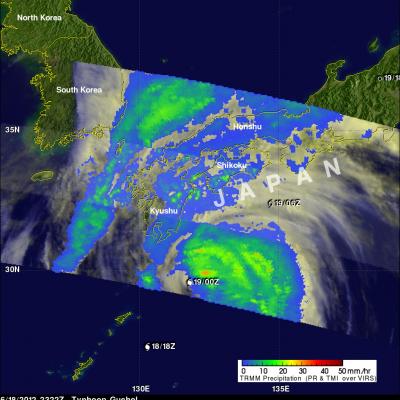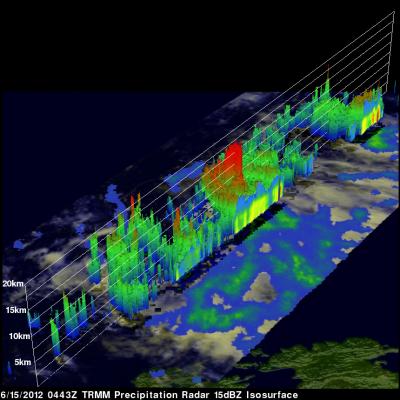Debby's Remnants Will Slightly Affect Bermuda
The remnant low pressure center from tropical storm Debby is predicted to kick up winds to gale force and cause a few showers today as it passes to the northwest of Bermuda. The TRMM satellite passed over the low early this morning at 0717 (4:17 AM ADT). TRMM Microwave Imager (TMI) and Precipitation Radar (PR) data show that Debby's remnant low contained a few light to moderate showers. A 3-D view using TRMM PR data shows that the most powerful of these storms were only reaching heights of about 10km (~6.2 miles).


